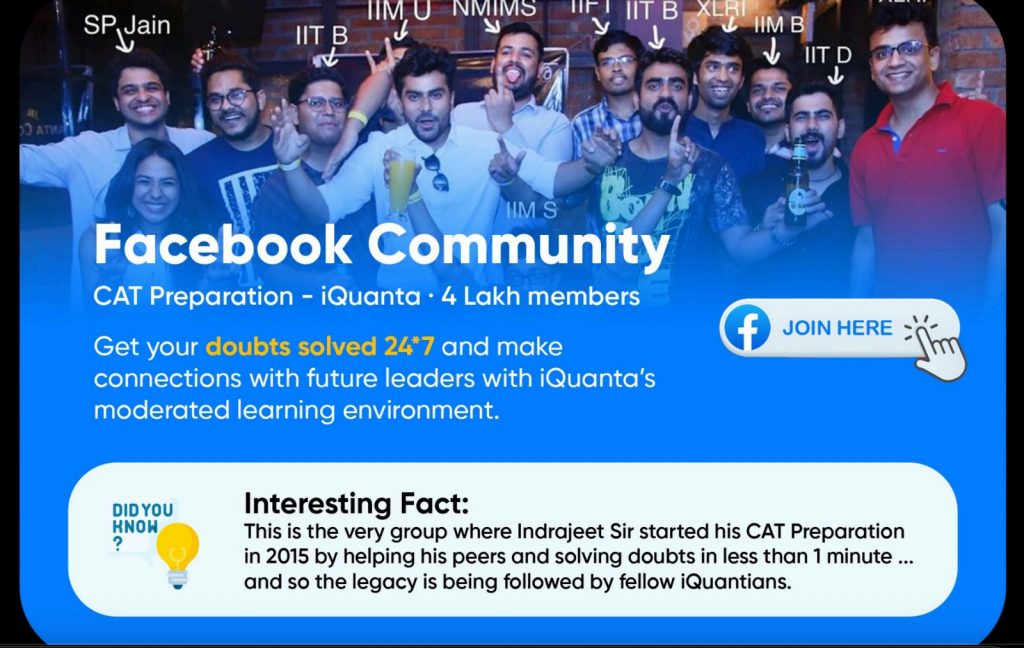The Common Admission Test (CAT) is a gateway to India’s top-tier B-schools; lakhs of aspirants every year compete for a few thousand seats and make it to one of the most competitive exams in India. But one question keeps on surfacing in every CAT aspirant’s mind: Is the CAT normalization process doing justice? Or could it be an intellectual scam that disadvantages students based on sheer luck of the slot draw? While IIMs and CAT authorities defend normalization and name it as a solution to maintain equality between multiple slots, many aspirants do not agree with it. Read on to critically examine the CAT normalization policy and how it works.
Join this free whatsapp group to get the latest information about CAT exam along with the strategies by CAT experts

Understand CAT’s Multiple Slot Structure
The Common Admission Test (CAT) is conducted in three slots on D-day. The slots are as follows:
| Slot 1 | Morning | 8:30 a.m. to 10:30 a.m. |
| Slot 2 | Afternoon | 12:30 p.m. to 2:30 p.m. |
| Slot 3 | Evening | 4:30 p.m. to 6:30 p.m |
Each slot of the CAT exam features a different set of questions. The CAT authorities make efforts to keep the difficulty level uniform, but creating identical question papers is statistically impossible. To address this concern, a normalization process is followed (similar to scaled scores in the GRE or GMAT), but there is a lack of transparency in CAT’s model, which raised the eyebrows of many.
What is CAT normalization?
As per the official IIM website, a normalization process adjusts the raw scores across different sections, i.e., VARC, LRDI, and QA, for different slots using a statistical model based on:
- Mean and standard deviation of raw scores
- Slot-wise difficulty adjustment using percentile equivalence
- Normalized scores computed section-wise and total
These normalized scores are then converted into percentiles, which are used for shortlisting candidates for further processing.
Why CAT Normalization Is Being Called an Intellectual Scam
The following pointers explain to you why CAT normalization is many a time called an intellectual scam.
- Lack of Transparency:
Unlike other standardized exams like the GRE or GMAT, the CAT does not publicly release any exact formulas or algorithms used for normalization, which leads to speculation that the process might be manipulated or inconsistent.
In CAT 2024, a student attempted Slot 1 and found VARC easy to moderate. But in Slot 3, many of his friends faced tough RCs. After the process of CAT normalization, his VARC score was higher with fewer attempts. Such anecdotal reports are common and indicate a mismatch in perceived fairness.
- Unfair Advantage Based on Slot
Let’s consider an example. Candidate A, who gave the exam in Slot 1, got a QA raw score of 30 and a normalized QA score of 37.5; Candidate B, who gave the exam in Slot 2, got a QA raw score of 30 and a normalized QA score of 29.4. Candidates A and B had the same raw score, but due to slot normalization, one sees an inflated score and the other a deflated one. This process can shift someone’s percentile from the 98th percentile to the 99+ percentile or vice versa.
- Subjective Judgement of Difficulty
The CAT aspirants assume that harder questions will lead to lower average scores and vice versa. One student might find difficulty in LRDI and VARC, and another may not; this is where subjectivity plays a big role. Many coaching institutes, including iQuanta, often release post-exam analysis rating slots on perceived difficulty. In CAT 2024, Slot 1 QA was easier, Slot 2 VARC was tougher, and Slot 3 LRDI had mixed sets. But these are subjective assessments, and the lack of alignment between ratings given by coaching and normalization outcomes raises concern.
- Data Patterns That Raises Eyebrows
Let’s understand below the CAT 2024 data:
| Percentile | Slot | Raw Score (Approx.) |
| 99 | Slot 1 | 99-100 |
| 99 | Slot 2 | 93-94 |
| 99 | Slot 3 | 92-93 |
The table above shows a slot-wise discrepancy in score-to-percentile mapping. The candidates with significantly lower raw scores in later slots still can secure perfect percentiles. Many aspirants called this unfair, particularly for those who secured higher raw marks but lower percentiles due to their slot’s statistical average being high.
What IIMs Say About CAT Normalization
The Indian Institutes of Management (IIMs) defend CAT normalization using statistical models like z-score scaling (a technique used to rescale data so that it has a mean of 0 and a standard deviation of 1), percentile equivalence mapping, and mean-standard deviation adjustment across slots.
IIMs openly put forward that every major competitive exam globally uses normalization. Additionally, IIMs claim that CAT normalization does not affect candidates ranks significantly, and the final shortlisting will be done on the basis of academic profile, work experience, diversity factors, and WAT-PI performance. So even a +2 or -2 percentile variation shouldn’t drastically change the outcomes. But this assumption will only hold when seats are ample, which is not the case in top IIMs.
Who Loses the Most in CAT Normalization
Let’s understand which segment of candidates is affected the most due to the CAT normalization process.
- Non-Engineers and Candidates with Diversity: The CAT exam is known to be a quant-heavy exam, especially in QA and LRDI. The non-engineers, who are already weak in the Quant section, often get slotted with tougher sections, which leads to loss via the normalization process.
- Easier Slots Performers: Suppose a candidate performs exceptionally well in an easier slot and scores 99 as a raw score. He may still get a lower percentile if the rest of the slots also perform well, bringing the average up. In these cases, doing well becomes a disadvantage.
- Students Without Coaching: As IIMs are never officially informed with regard to the normalization process, the coaching students often rely on detailed slot analysis and real-time performance prediction to adjust the preparation strategy. A student without this support may get into a more difficult slot. This is where the normalization process affects the percentile of the candidates.
The Ethical Debate: Is This Really an “Intellectual Scam”?
It’s a strong claim calling CAT normalization a scam. But when high-stakes future managers are decided by a model, students have all the rights to demand the transparency.
Let’s consider the following concerns:
| Concerns | Justification |
| Lack of Transparency | No official release of formulas, like GRE/GMAT |
| High Standard Deviation within Slots | Advantage the average performance and disadvantage for high performers |
| Emotional and Psychological Impact | Aspirants report burnout and anxiety over choice of slots |
| False Sense of Fairness | Normalization masks real inequities by appearing “scientific.” |
Know Others Opinion On This
Anmol Gupta – 99.47 Percentiler
Well, I feel it is not a scam but a way to compensate for the level of difficulty across the three slots. However, I do feel it is a bit unfair, the reason being sometimes the normalization is unjust. Like if I attempt three slots there would be an obvious variation of marks. Sometimes, it could be up to 10-15 marks and this normalization fails to cover for that gap. What, I would suggest is to have a single slot as it will help to overcome this variation of normalization.
Aditya – CAT 99.57 Percentiler
The normalization process is of utmost importance. Not just in CAT, this happens in other competitive exams like JEE as well. The only demerit of this is that if all the faculties and teachers get the same slot then it gets very unfair for the students of that slot and your percentile will not just depend on your performance but also on yhe unpredictability of his/her’s slot’s difficulty. So, i feel that even luck plays a huge role.
Anushka IIM Vizag Alumna
The CAT normalization policy claims to level the playing field across exam sessions, but its lack of transparency breeds frustration. Why do students in tougher slots sometimes end up with lower percentiles despite similar performance? The secretive calculations make it feel less like fairness and more like a numbers game—one where luck plays too big a role. Until IIMs openly explain their methods, candidates will keep wondering: Is this really about merit, or just statistical convenience? For a test that shapes careers, trust shouldn’t be optional. They should reveal the whole normalization scheme after releasing the response sheet. It will add on transparency.
Suggested Reforms to Make CAT Normalization Fairer
CAT authorities can come up with a few changes to regain the trust of candidates and can make the normalization process more equitable and student-friendly. To end this debate of the CAT normalization process being unfair, the following changes can be done.
- Publish slot-wise raw score vs. percentile data, which provide insights into actual differences across slots and ensure accountability in how normalization is applied.
- Conduct the CAT exam over more days with equal slot allocation, which will ensure that the same candidate set is evenly distributed across difficulty levels, helping in better standardization.
- Offer optional retests or moderation policies for extreme cases, like many times candidates report experiencing technical glitches or question papers that felt much harder than others. CAT authorities allow such cases to opt for retests, or their slot should be reviewed or moderated separately.
- Create a grievance redressal mechanism wherein, if any student feels wronged by slot difficulty or score anomalies, they can raise concerns about such issues post-result release, to which responses should be given within a fixed time frame. This step will show that CAT authorities are accountable and value student feedback.
These suggested reforms are not about removing normalization; instead, they are about making it transparent, fair, and backed by evidence. When lakhs and lakhs of careers depend on a few percentile points, even a small improvement can make a very big impact.
Join the Largest CAT Preparation Community in India

Conclusion: Broken or Misunderstood?
The CAT normalization policy is not entirely a scam, but it’s certainly flawed or poorly communicated. In this current competitive scenario where even 0.5 percentile can change a candidate’s fate, normalization feels like rolling the dice on destiny. Transparency is not just a demand; it’s a process that affects tens of thousands of careers. Until IIMs make the process clearer and more involved, the normalization debate will remain alive, and so will the perception of it being an intellectual scam remain in the picture.
iQuanta CAT Course 2025





